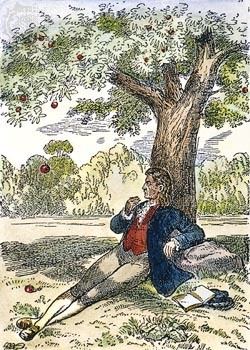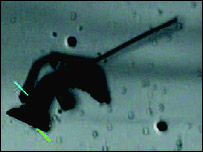 Myth: Newton devised his universal law of gravity when an apple fell on his head from the tree under which he was sitting
Myth: Newton devised his universal law of gravity when an apple fell on his head from the tree under which he was sitting
It is always exciting to think of a great discovery happening in the blink of an eye due to a coincidental event – we consider that if it were not for the right person being in the right place at the right time, man would have lost an incredibly significant piece of knowledge. For this reason people have clung to the idea that Newton devised his universal law of gravity because of an apple hitting him on the head. But in fact the first mention of an apple in relation to Newton came 60 years after his death: “Whilst he was musing in a garden it came into his thought that the power of gravity (which brought an apple from the tree to the ground) was not limited to a certain distance from the earth but that this power must extend much further.” (John Conduitt)
Interesting Fact: Though he is better known for his love of science, the Bible was Sir Isaac Newton’s greatest passion. He devoted more time to the study of Scripture than to science, and he said, “I have a fundamental belief in the Bible as the Word of God, written by those who were inspired. I study the Bible daily.” He spent a great deal of time trying to discover hidden messages within the Bible.




